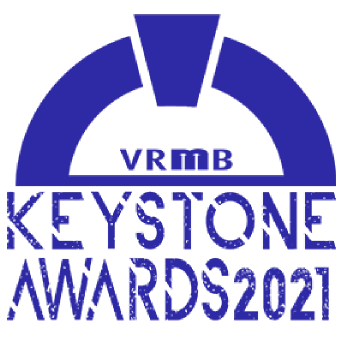A recent study was published outlining the state of the global vacation rental industry, with a focus on segmentation and software spending. Specifically, this report is a compilation of public and private data that shows just how large and robust the market is for vacation rental management software.
There is certainly a lot to talk about, much of which is critical for vacation rental managers to understand and digest. In today’s article, we take a closer look at one aspect of this report: the state of the vacation rental industry in the U.S. We encourage all vacation rental professionals to download the full report.
The American vacation rental industry
Did you know that there are over 23,000 vacation rental companies in the U.S.? More than a year ago, Phocuswright announced that the U.S. private accomodation market will reach $36.6B by 2018. A large portion of this includes vacation rentals.
And what a ride it has been over the last few decades for the vacation rental industry here in the U.S. Futurestay lists all of the major milestones of the vacation rental industry, including the launches of VRBO and Airbnb in 1995 and 2008, respectfully. It also includes Expedia’s purchase of Orbitz Worldwide and HomeAway in 2015.
The entire list paints a clear picture of how we got where we are today. That’s all great, but what about the future of our industry?
Forbes recently proposed the four most important trends that are reshaping the state of the vacation rental industry today. They are:
- Rent demand
- Population shift
- Market opportunities
- Technology disruption
Which of these trends is most important to your business? Let us know in the 2018 hospitality survey, and compare your vacation rental company hospitality practices against other leaders in the industry. See here for previous years’ trends that were most important to vacation rental managers.
Number of U.S. vacation rental companies and properties
The market sizing report took a close look at vacation rental companies in the U.S., including their numbers, size, and global market share.
The total number of vacation rental companies in the U.S. is currently at 23,000, which makes up 20 percent of all the vacation rental companies in the world. The average compound annual growth rate for this decade so far is 8.5 percent, which means this is a booming industry!
To calculate this, the report used the compound annual growth rate from 2014-2017 (10.00 percent according to Piper Jaffray) and 2017-2021 (7.07 percent according to Technaivo Research).
The report cites U.S. Census data which notes that there are 252 million housing units in the U.S. in 2018, with 3.5 percent of the of those are being used as second homes. A second home is a residential property that the owner doesn’t use as a primary residence. They may use it for a number of other reasons, or keep it vacant, but some people take advantage of an opportunity for passive income, and rent it out.
The number of second homes in the United States totals 9 million.
The report further found that 44 percent of those second homes are professionally managed, and 25-35 percent of them are rented out. Using this data, the report concludes that 25 percent of all second homes are both used as a rental property and professionally managed.
There are different sizes of vacation rental property companies. Using Hostfully data, and public Airbnb data, the report notes that 70 percent of the vacation rental companies are small, managing 1-19 units. 20 percent of all vacation rental companies are medium-sized and manage about 20-99 units, and the remaining 10 percent are large companies that manage over a 100 units.
There are 9 million second homes in the U.S., and 25 percent of those are rented through property management companies. Each of those companies has on average 100 units, so the total number of the vacation rental companies in 2018 in the United States is approximately 23,000.
Where are we headed?
Reportlinker published this comprehensive report on the question of the vacation rental industry trajectory, and its growth expectations of the global vacation rental sector for 2017-2021. In this report, it was estimated that the worldwide vacation rental market will increase at a compound annual growth rate of about 7.1 percent between 2017 and 2021.
They state in the report that millennials make 40 percent of leisure travelers who book their travel online. They do it on their phones, use their work travel to create personal vacations, and spend more on vacations than other age groups.
As the guest experience is always changing, it’s important to learn how the industry is accomodating that change in consumer demand.
Summer in the USA
Holidu, a search engine for vacation rentals assembled some further research on the U.S. rental vacation market in March 2018. Sarah Sullivan, Holidu PR Manager based out of Munich noted that they “compared a busy week of summer travel (week surrounding the 4th of July) with a quiet summer week and did a state by state but also region by region breakdown of prices.”
Some of the more interesting discoveries they found:
- Wyoming is home to the most expensive vacation rentals around the 4th of July
- Average nightly rates in popular vacation destinations range from $186 per night to $978 per night (for a family-sized rental)
- Around Independence Day, Nantucket is more expensive than all other popular summer tourist destinations, with $978 dollars required per night; close behind are The Hamptons, Montauk, Long Island, Half Moon Bay, Newport Beach, Santa Barbara, San Diego, Palm Springs and Lake Tahoe
- You can save up to 70% depending on what week in the summer you travel
A different type of U.S. vacation rental demand
Glamping
Other than using traditional accommodation, travelers can also experience all the beauty of camping, even if they don’t want all the hassle. Giovanna Tapia, the Public Relations & Marketing Executive at Glamping Hub shared with us that glamping (glamorous camping) is on the rise. “Just a few months earlier, we only had 14,000 accommodations on our site, and we are not at 25,000,” she said.
Tapia says that the glamping industry is growing because “more and more people wanting to experience the great outdoors without sacrificing many creature comforts of home and city life.”
By glamping, people “experience the most beautiful natural destinations in the world while staying in a beautiful and comfortable accommodation,” said Tapia.
Peer-to-peer boat rental
Another interesting way to travel is by using the peer-to-peer boat rental community. Pierre Le Poulain from Samboat wants you to think of his website as Airbnb for boats.
Le Poulain says, “Just like Airbnb did with the hotels and Uber with the taxis, we (as Samboat) have seen more and more people interested in peer-to-peer boat rental.” Samboat mostly has rentals in Europe, but it’s starting to pick up in the United States as well.
Final thoughts
After compiling and reviewing the data, it is clear that the vacation rental industry in the U.S. is certainly on a growth trajectory. And, it will stay that way for the foreseeable future. Not only is it currently growing at a compound annual growth rate of about 7.1 percent, but it is also growing globally and in terms of technology innovation. More on that in later articles from Hostfully.
Not only should the market expect more vacation rental companies, we should also expect some of them to be less than traditional, like the ones offering glamping or boat living. Given this, it’s more important than ever to better understand vacation rental customers and their changing expectations, especially when it comes to creating a frictionless, custom local experience.








